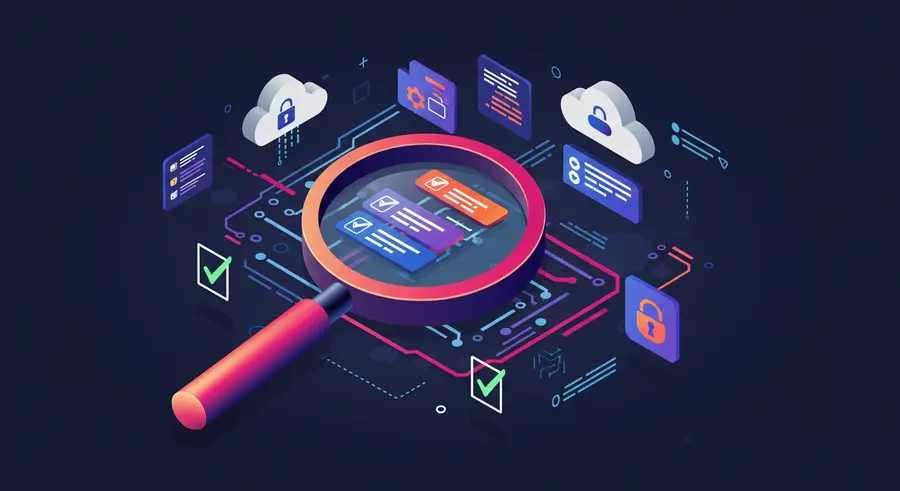Serverless Security Audits: Ensuring Robust Cloud Functions & Data Protection

Serverless architectures, while offering unparalleled scalability and cost efficiency, introduce a unique set of security challenges. The distributed nature, reliance on third-party services, and often granular permissions demand a specialized approach to security. This is where serverless security audits become indispensable. A thorough audit ensures that your serverless applications are not only performing optimally but are also resilient against common vulnerabilities and compliant with industry regulations.
Why Are Serverless Security Audits Crucial?
Unlike traditional monolithic applications, serverless functions are ephemeral, stateless, and often triggered by various events. This paradigm shift means traditional security tools and methodologies may not be fully effective. Key reasons for conducting regular serverless security audits include:
- Reduced Attack Surface (and new vectors): While the infrastructure is managed by the cloud provider, misconfigurations, overly permissive IAM roles, and vulnerable code within your functions can create new attack vectors.
- Data Protection: Serverless applications often handle sensitive data. Audits help ensure data is encrypted in transit and at rest, and access controls are properly implemented to prevent unauthorized exposure.
- Compliance: Many industries are subject to strict regulatory compliance (e.g., GDPR, HIPAA, PCI DSS). Audits help demonstrate adherence to these standards.
- Cost Efficiency: Identifying and patching vulnerabilities early can prevent costly breaches, downtime, and reputational damage. Just as efficient financial management relies on market analysis to mitigate risk, secure serverless deployments require proactive audits.
- Maintaining Trust: In an era of constant cyber threats, proving your commitment to security builds trust with users and stakeholders.
Key Areas of a Serverless Security Audit
A comprehensive serverless security audit typically covers several critical areas:
1. Identity and Access Management (IAM) Review
This is perhaps the most critical aspect. Overly broad permissions assigned to serverless functions or service roles can lead to privilege escalation attacks. An audit should verify:
- Least Privilege: Ensure functions only have the minimum necessary permissions to perform their task.
- Role-Based Access Control (RBAC): Proper separation of duties and clear responsibilities for different functions.
- Federated Identities: Secure integration with external identity providers.
2. Code Review and Static/Dynamic Analysis (SAST/DAST)
The code within your serverless functions is a prime target for attackers. Audits should involve:
- Vulnerability Scanning: Using SAST (Static Application Security Testing) tools to identify common vulnerabilities (e.g., injection flaws, insecure deserialization) in the code before deployment.
- Dependency Scanning: Checking for known vulnerabilities in third-party libraries and packages.
- Dynamic Analysis: DAST (Dynamic Application Security Testing) tools or penetration testing against deployed functions to find runtime vulnerabilities.
- Input Validation: Ensuring all inputs are properly sanitized and validated to prevent injection attacks.
3. API Gateway and Event Source Security
Serverless functions are often exposed via API Gateways or triggered by various event sources. Auditing these entry points is crucial:
- Authentication & Authorization: Verify robust mechanisms are in place (e.g., API keys, OAuth, JWT).
- Throttling & Rate Limiting: Prevent denial-of-service (DoS) attacks.
- Input Validation: At the API Gateway level to filter malicious requests early.
- Secure Configuration: Proper setup of CORS, WAFs (Web Application Firewalls), and endpoint types.
4. Data Security and Storage
How data is handled, stored, and accessed by serverless functions is paramount:
- Encryption: Ensure data is encrypted at rest (e.g., S3 buckets, DynamoDB tables) and in transit (TLS/SSL).
- Access Controls: Fine-grained permissions on data stores.
- Sensitive Data Handling: Avoid storing sensitive data directly in environment variables or logs. Use secure secrets management services. Just as portfolio management demands careful handling of financial assets, secure serverless deployments require meticulous data protection.
5. Logging, Monitoring, and Alerting
Robust observability is key to detecting and responding to security incidents:
- Centralized Logging: Ensure all function invocations, errors, and relevant security events are logged.
- Security Monitoring: Integration with SIEM (Security Information and Event Management) systems.
- Real-time Alerts: Set up alerts for suspicious activities, failed authentications, or unauthorized access attempts.
6. Network Configuration
While serverless abstracts much of the networking, understanding and auditing access from your functions to other resources is important:
- VPC Configuration: If functions operate within a Virtual Private Cloud (VPC), ensure proper subnetting, security groups, and network ACLs.
- Outbound Access: Limit and monitor outbound connections to only necessary endpoints.
Tools and Methodologies for Serverless Security Audits
Executing an effective serverless security audit involves a combination of automated tools and manual processes:
- Cloud Provider Native Tools: AWS Config, CloudTrail, GuardDuty; Azure Security Center, Azure Monitor; Google Cloud Security Command Center, Cloud Logging.
- Third-Party Security Tools: Specialized serverless security platforms (e.g., PureSec, Snyk, Checkmarx, Wiz) that offer comprehensive vulnerability scanning, compliance checks, and runtime protection.
- Open Source Tools: Serverless-specific linters, static code analyzers, and configuration checkers.
- Penetration Testing: Ethical hacking to simulate real-world attacks against your deployed serverless applications.
- Manual Code and Configuration Review: Expert human review can uncover logic flaws or subtle misconfigurations that automated tools might miss.
- Compliance Frameworks: Utilizing frameworks like the OWASP Serverless Top 10 to guide the audit process.
In the realm of advanced analytics, tools that offer AI-powered insights can significantly enhance the efficiency and depth of a security audit, just as they provide a deeper understanding of market sentiment for financial professionals.
Best Practices for Continuous Security Auditing
Security is not a one-time event, especially in dynamic serverless environments. Implement a continuous security auditing process:
- Shift-Left Security: Integrate security checks early into the development pipeline (CI/CD).
- Automated Scanning: Regular, automated scans for vulnerabilities and misconfigurations.
- Threat Modeling: Proactively identify potential threats and vulnerabilities during the design phase.
- Regular Reviews: Periodically review IAM policies, network configurations, and code for changes.
- Incident Response Plan: Have a clear plan for detecting, responding to, and recovering from security incidents.
- Stay Updated: Keep abreast of the latest serverless security threats and best practices.
For more insights into securing your serverless applications, consider these resources: